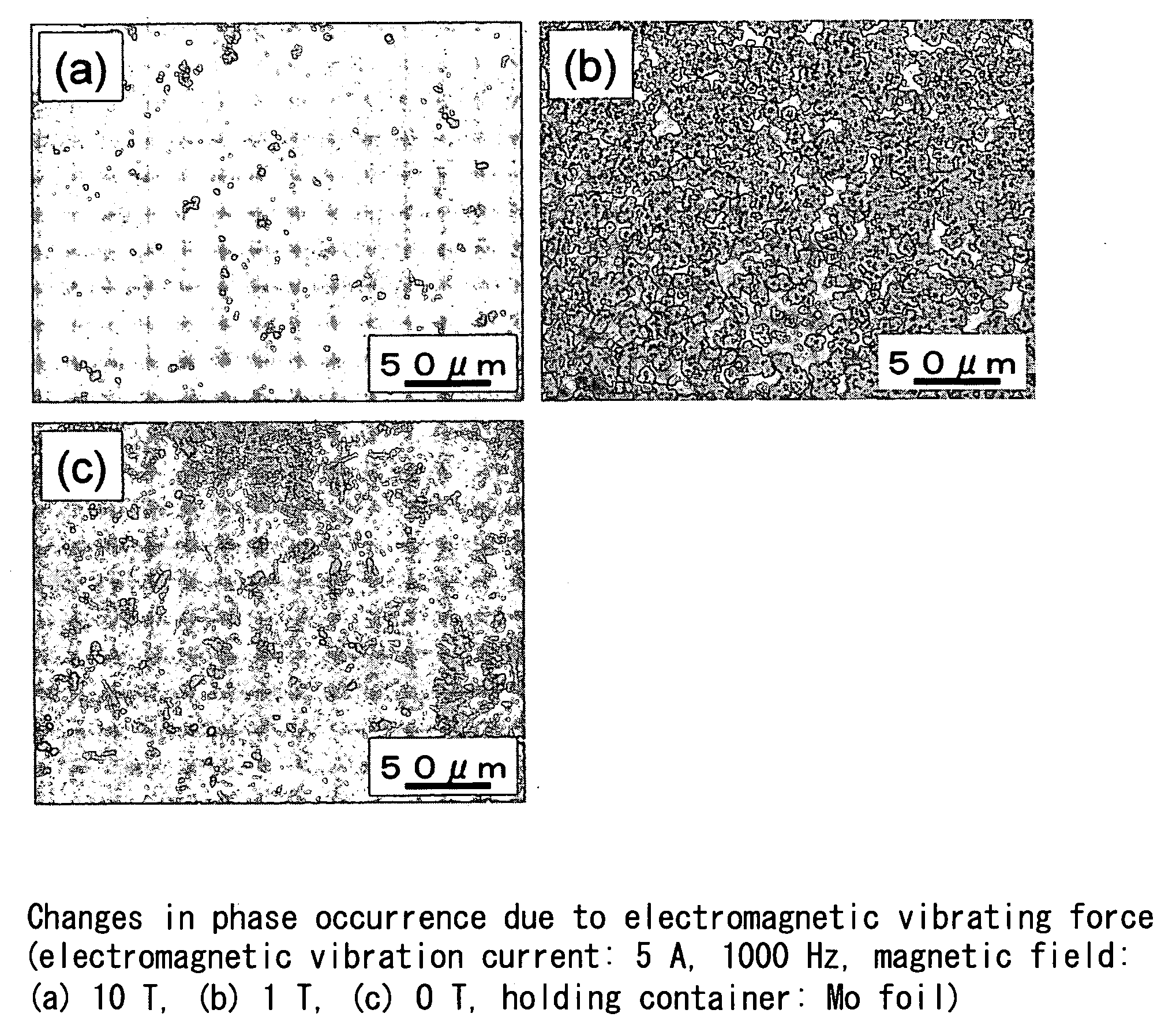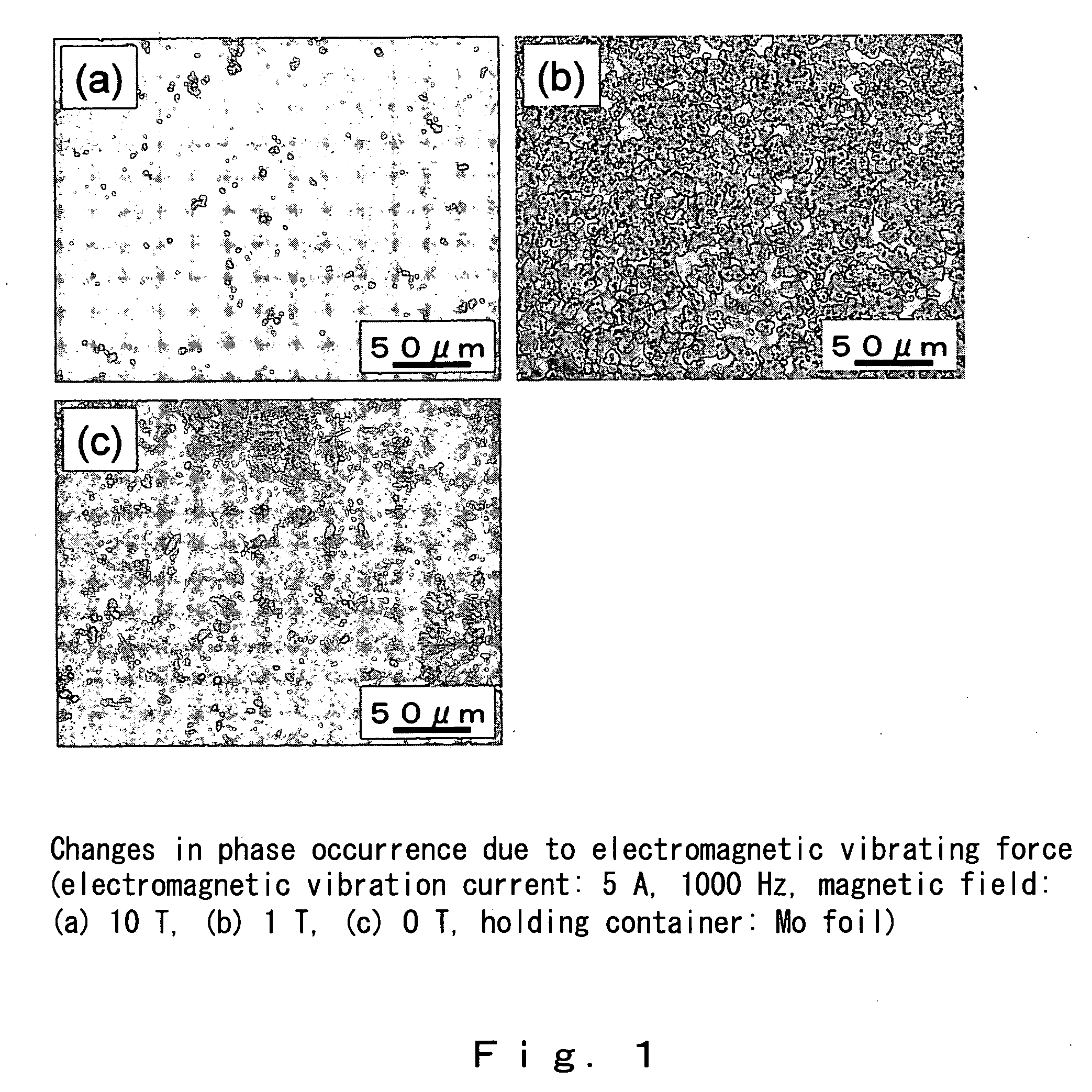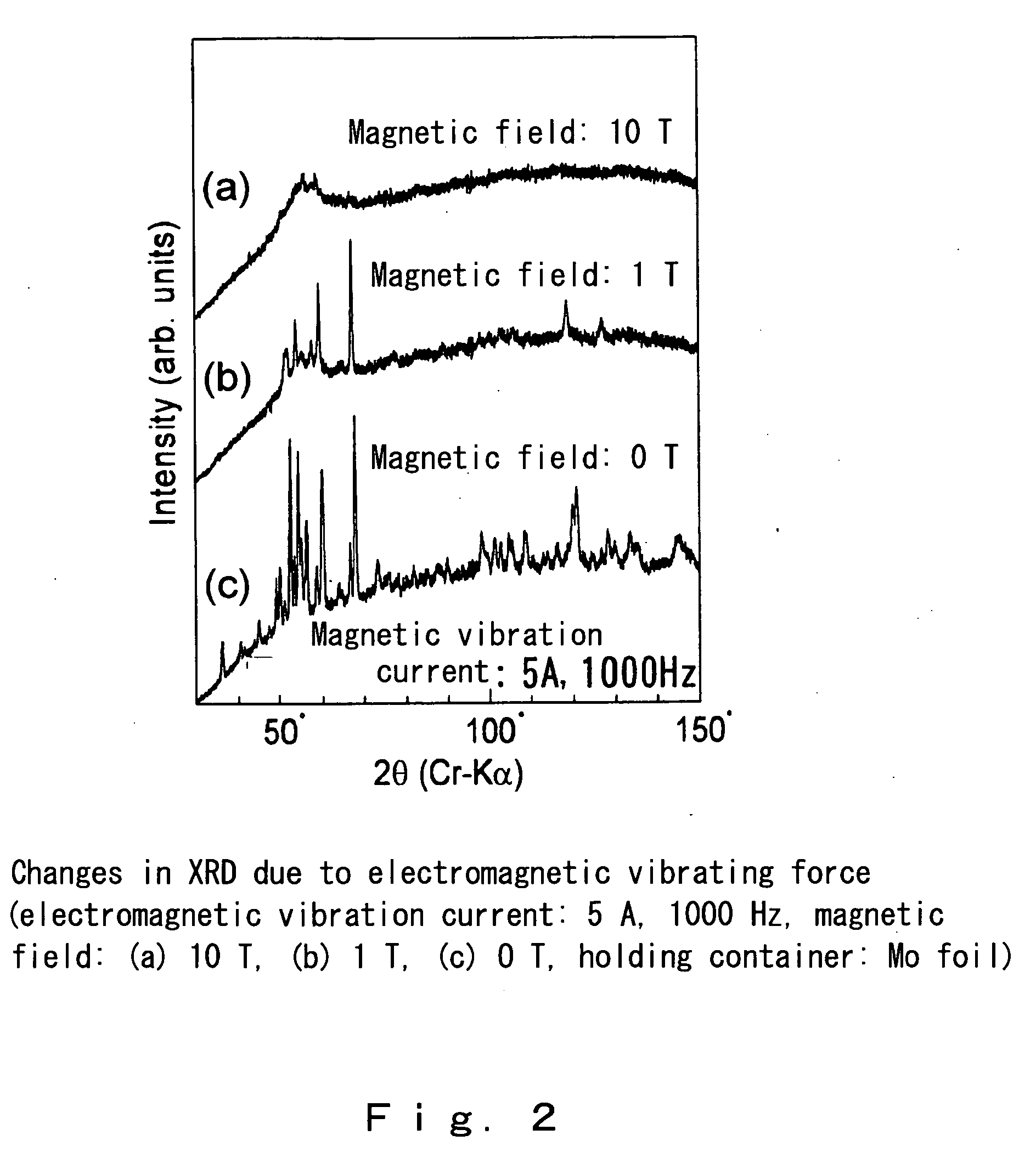Metal glass body, process for producing the same and apparatus therefor
a technology of metal glass and process, applied in the field of metal glass body, can solve the problems of no other process, limit the size of the resulting member, and the inability to manufacture large sizes with certain alloy systems, and achieve the effect of improving the formation capability of metal glass
- Summary
- Abstract
- Description
- Claims
- Application Information
AI Technical Summary
Benefits of technology
Problems solved by technology
Method used
Image
Examples
example 1
[0027] In this invention, an electromagnetic vibration process is explained which uses Mo foil for the holding container.
1) Methods
[0028] An electromagnetic vibration-applying mechanism was prepared using Mo foil for the holding container. A Mg65Y10Cu25 (2 mm dia., 12 mm) alloy was placed as the sample in the holding container and heated with an external heater to melt it at 550° C. for 2 minutes, and then electromagnetic vibration was applied thereto for 10 seconds, while spraying water thereon to water-cool the alloy. The effects of the electromagnetic vibrating force on metal glass formation capability were investigated.
2) Effects
[0029] As shown in the structural photograph of FIG. 1(a) and the XRD of FIG. 2(a), when electromagnetic vibration was applied at an electromagnetic vibrating current of 5 A, 1000 Hz with a magnetic field of 10 T, a metal glass single phase was obtained.
[0030] When the electromagnetic vibrating force was weakened by reducing the magnetic field to ...
example 2
[0031] In this example, an electromagnetic vibrating process is explained which uses an alumina tube for the holding container.
1) Methods
[0032] Using an alumina tube (external diameter 3 mm, internal diameter 2 mm) with a slower cooling speed than Mo foil as the holding container, Mg65Y10Cu25 (2 mm dia., 12 mm) alloy was placed in the container and heated with an external heater to melt it at 550° C. for 2 minutes, and then electromagnetic vibration was applied for 10 seconds, while spraying water thereon to water-cool the alloy. The effects of electromagnetic vibrating force on metal glass formation capability using as the holding container an alumina tube, which has a slower cooling speed was investigated.
2) Effects
[0033]FIG. 3 shows structural photographs when the electromagnetic vibrating force was set to a magnetic field of 10 T and a magnetic vibrating current of 5 A, with the electromagnetic vibrating frequency at 100 Hz, 1000 Hz and 5000 Hz. As shown in FIG. 3(a) at an...
example 3
[0035] In this example, the effects were studied in an alloy system other than Mg.
1) Methods
[0036] To confirm that this process is effective even with metal materials other than Mg65Y10Cu25 alloy, a similar test was performed using (Fe0.6Co0.4)72Si4B20Nb4 alloy, the melting point of which is about 800° C. higher than that of Mg alloy, and the effects of this process were confirmed. The current frequency range was 10 Hz or more, the magnetic field strength range was 1 Tesla or more, and the current strength range was 1×106 A / m2 or more.
2) Results
[0037] The results are shown in FIG. 5. When no electromagnetic vibration was applied, many crystals were generated which could be distinguished by their black color, but when electromagnetic vibration was applied (5 A, 5,000 Hz, 10 T), the crystals were reduced and there was more vitrification. This shows that generation of metal glass by an electromagnetic vibration process is effective even in metal materials other than magnesium all...
PUM
| Property | Measurement | Unit |
|---|---|---|
| Magnetic field | aaaaa | aaaaa |
| Frequency | aaaaa | aaaaa |
| Temperature | aaaaa | aaaaa |
Abstract
Description
Claims
Application Information
 Login to View More
Login to View More - R&D
- Intellectual Property
- Life Sciences
- Materials
- Tech Scout
- Unparalleled Data Quality
- Higher Quality Content
- 60% Fewer Hallucinations
Browse by: Latest US Patents, China's latest patents, Technical Efficacy Thesaurus, Application Domain, Technology Topic, Popular Technical Reports.
© 2025 PatSnap. All rights reserved.Legal|Privacy policy|Modern Slavery Act Transparency Statement|Sitemap|About US| Contact US: help@patsnap.com



